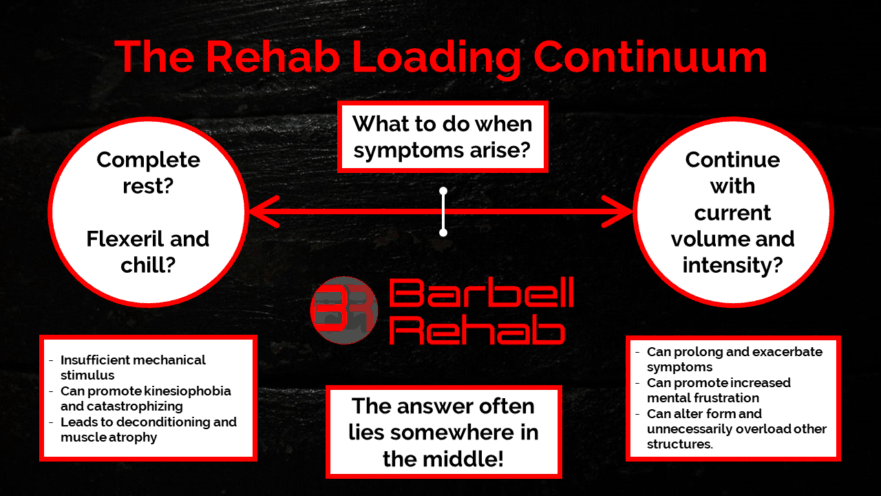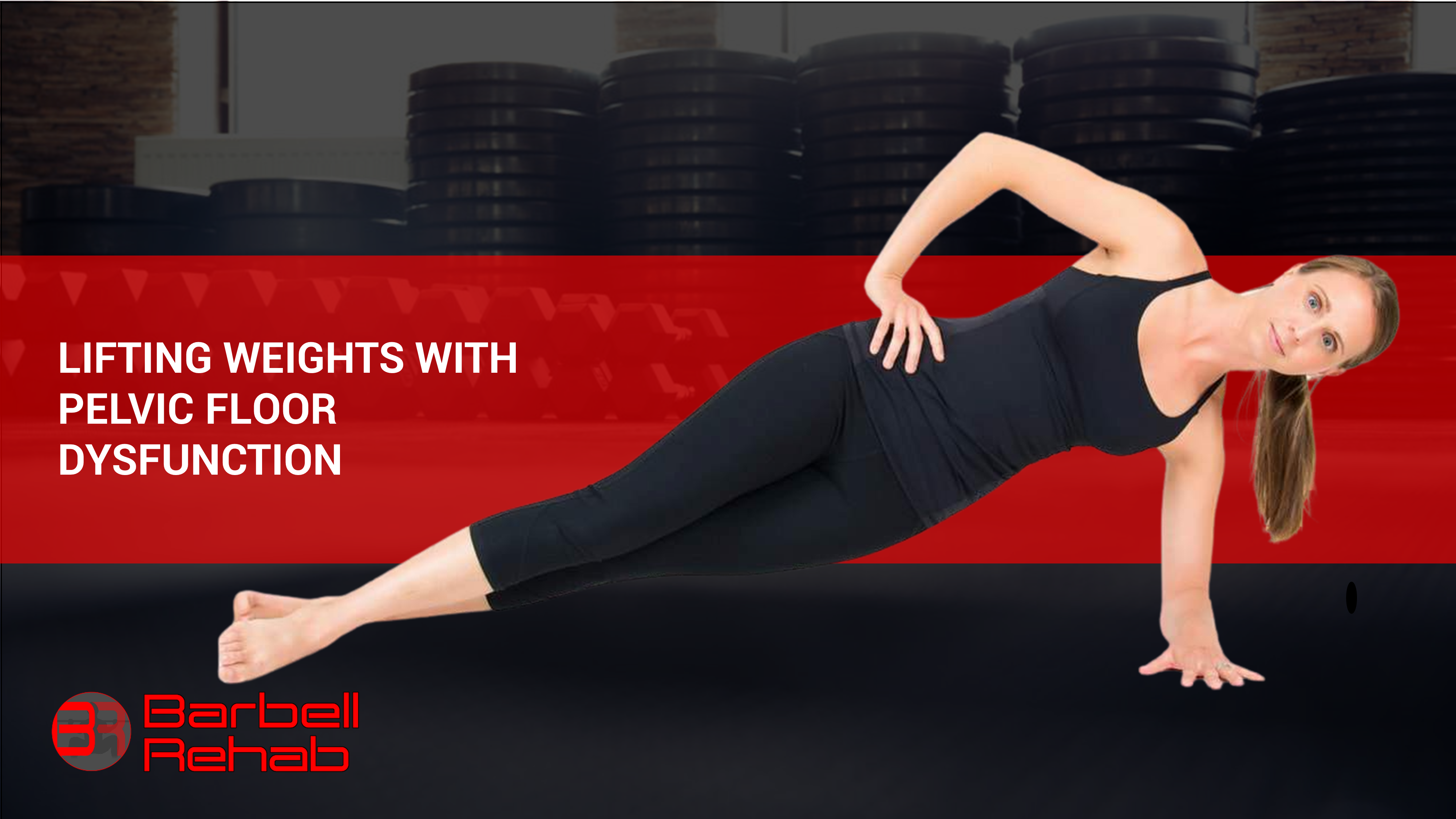When it all boils down, effective rehab is based on the principle of load management. When symptoms arise, what do you do? Do you continue as planned? Do you take complete rest? The answer to optimal rehab loading often lies somewhere in the middle.
The Problem with "Flexeril and Chill"
Unfortunately, recommendations of complete rest with prescriptions for muscle relaxers are still the go-to treatment for some practitioners. Barring some sort of significant systemic medical concern, this is often not necessary, and can further exacerbate issues.
When it comes to optimal rehab loading, complete rest can negatively impact the trainee on a psychological level. It can lead to feelings of kinesiophobia (if I move I will make it worse), and catastrophizing (this issue is a lot worse than it really is). These thoughts can then snowball and lead you down a slippery slope!
Limit Deconditioning
Whether it's an acute injury such as that dreaded "Low Back Tweak" or onset of pain that interferes with your ability to load, the first goal in a rehab program should be to limit deconditioning. This is why "just rest for two weeks" is often suboptimal advice.
Complete rest can lead to muscular atrophy, detraining, and deconditioning, making it that much more difficult to return to baseline upon returning to training. There is a better way to optimize rehab loading!
Modification of Form and Programming
Modify Form. Do you have shoulder pain with the bench press? Have you tried altering your grip temporarily? Often times this is all that is necessary to mitigate the symptoms, and also to limit deconditioning.
Modify Intensity. Did your symptoms arise only at a specific intensity? Sometimes a form modification isn't necessary. In this case, getting more volume in at a lower intensity, just beneath the symptom threshold, can do the trick!
Modify Frequency. Do you feel burned out from training a specific lift 3x/week? Maybe neither a form modification nor a change in intensity is needed. Instead, decreasing the frequency of the symptomatic lift to only 2x/week can leave you feeling refreshed and decrease symptoms!
The Problem with Just "Pushing Through Things"
While complete rest can lead to detraining, continuing to push through the current programmed intensity, volume, and frequency when symptoms arise may also not be optimal.
While there will certainly be mild symptoms that arise here and there during training that can be ignored (remember pain is not always indicative of tissue damage), when symptoms are severe and persisting, "just pushing through it" can have deleterious effects.
Continuing to train with severe symptoms can lead to subconscious changes in form, as the body tries to reflexively offload the symptomatic structures. This can potentially lead to unnecessarily overloading other structures. While this may not directly lead to injuries elsewhere, I'm not willing to take that chance!
Purposeful, rational, and programmed form modifications are recommended in this circumstance vs. just "seeing what the body does."
Additionally, just grinding through symptomatic lifts can lead to increased frustration and prolong the symptoms. So as you can see, there is always a psychological component!
The Rehab Loading Continuum
When symptoms arise, optimal rehab loading is obviously going to vary on a case by case basis. However, rarely is "just rest" or "just grind through it" the answer. The answer often lies someone on a continuum between these two mindsets!
Varying form, intensity, volume, or frequency can help mitigate the symptoms, limit deconditioning, and get you back to full capacity!





